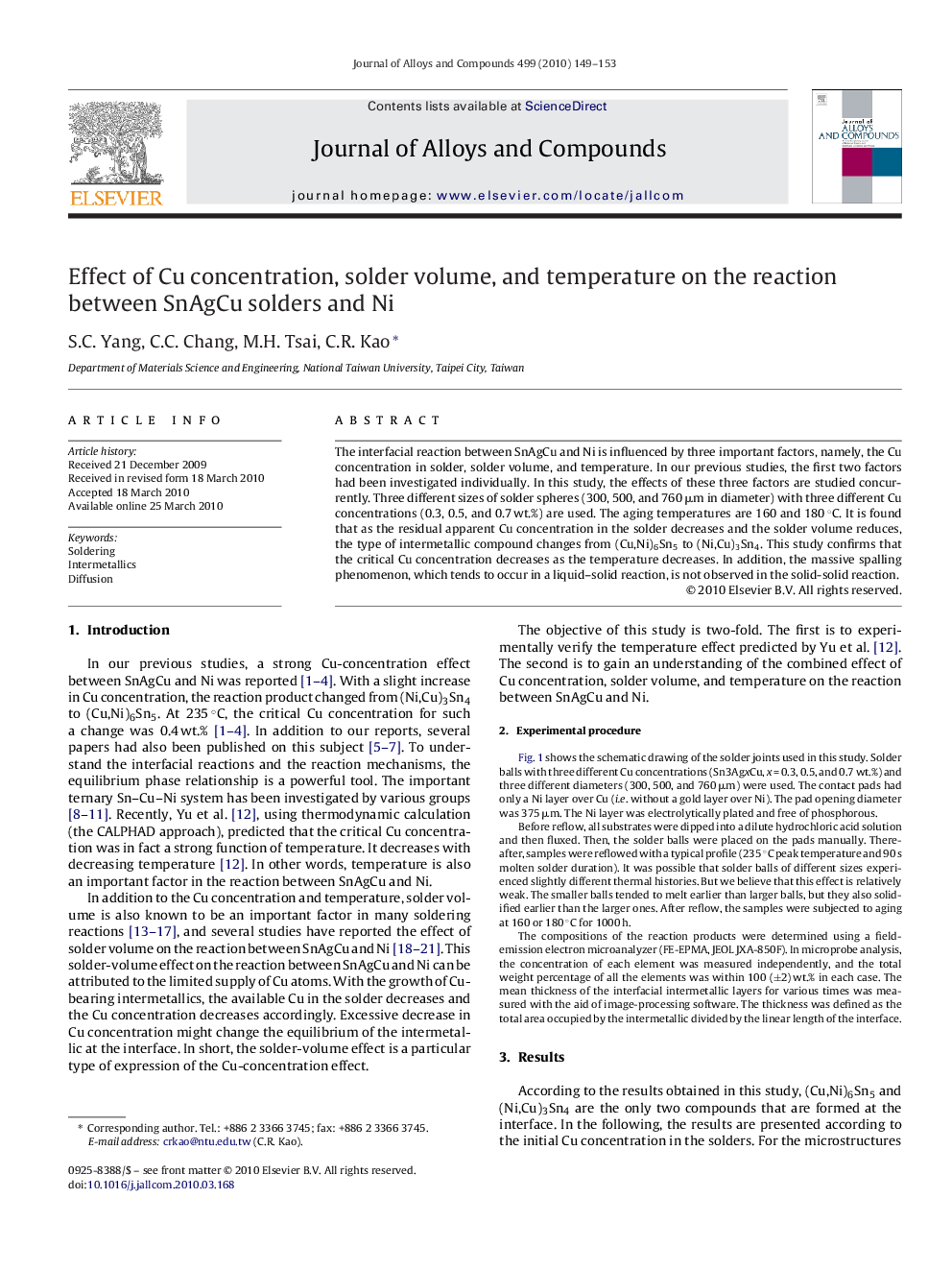| Article ID | Journal | Published Year | Pages | File Type |
|---|---|---|---|---|
| 1621469 | Journal of Alloys and Compounds | 2010 | 5 Pages |
Abstract
The interfacial reaction between SnAgCu and Ni is influenced by three important factors, namely, the Cu concentration in solder, solder volume, and temperature. In our previous studies, the first two factors had been investigated individually. In this study, the effects of these three factors are studied concurrently. Three different sizes of solder spheres (300, 500, and 760 μm in diameter) with three different Cu concentrations (0.3, 0.5, and 0.7 wt.%) are used. The aging temperatures are 160 and 180 °C. It is found that as the residual apparent Cu concentration in the solder decreases and the solder volume reduces, the type of intermetallic compound changes from (Cu,Ni)6Sn5 to (Ni,Cu)3Sn4. This study confirms that the critical Cu concentration decreases as the temperature decreases. In addition, the massive spalling phenomenon, which tends to occur in a liquid-solid reaction, is not observed in the solid-solid reaction.
Keywords
Related Topics
Physical Sciences and Engineering
Materials Science
Metals and Alloys
Authors
S.C. Yang, C.C. Chang, M.H. Tsai, C.R. Kao,
